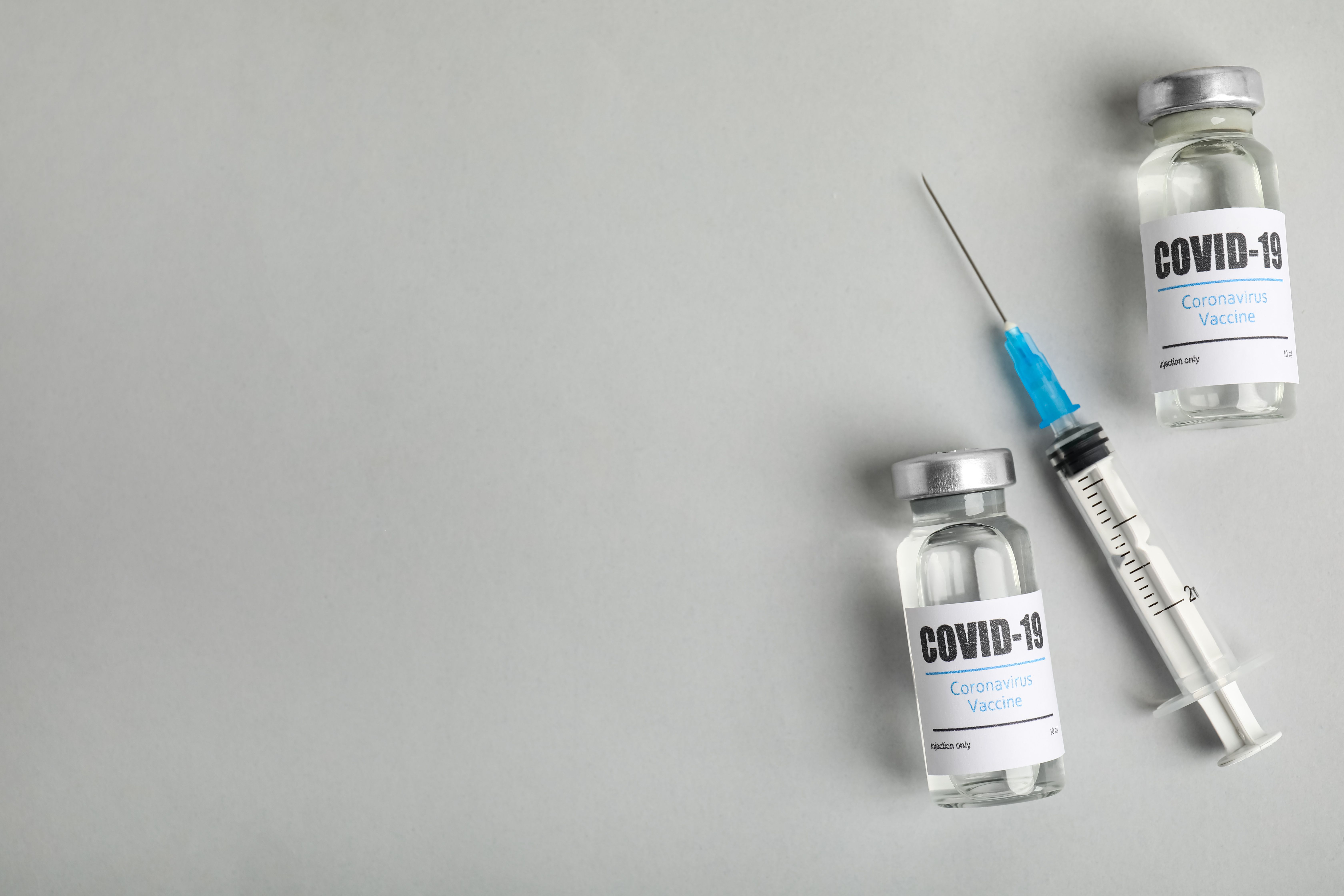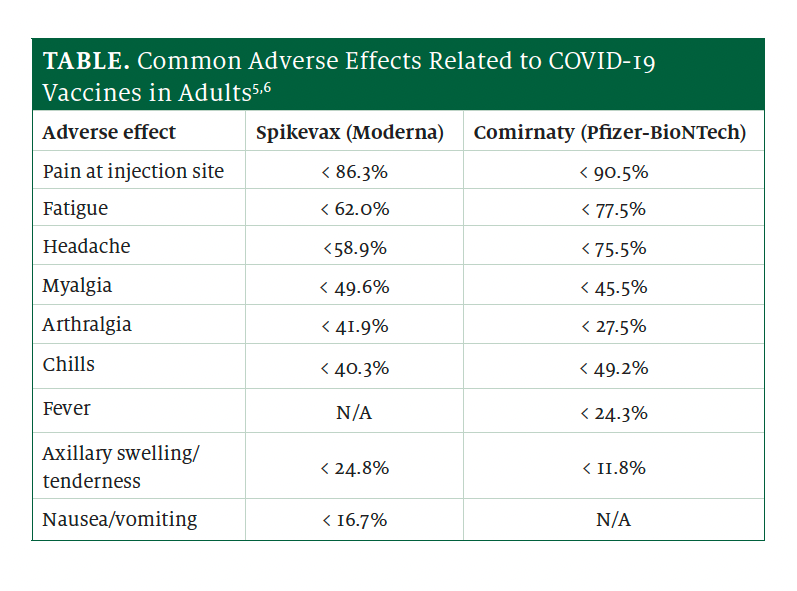News
Article
New COVID-19 Vaccines Will Keep Pharmacy Staff Busy
Author(s):
Both newly approved shots possess activity against subvariant EG5.1, which represents an estimated 21.5% of currently circulating variants
Here we go again. Pharmacy staff across the nation can expect plenty of walk-in customers following the FDA’s September 11, 2023, approval of 2 updated COVID-19 messenger RNA (mRNA) vaccines in adults.1
Image credit: New Africa | stock.adobe.com

Children aged 6 months to 18 years are covered under an Emergency Use Authorization (EUA).2,3 On September 12, the CDC recommended that all Americans 6 months and older receive either Moderna’s or Pfizer- BioNTech’s version of the COVID-19 2023-2024 monovalent vaccine,4-6 which targets the Omicron subvariant XBB.1.5, which seems to have peaked in the summer only to be replaced by related subvariants.2,3 Concurrently, the FDA withdrew the EUA for the older bivalent COVID-19 vaccines that had been available for a year. Those vaccines included antigens from the ancestral SARS-CoV-2 virus and Omicron subvariants BA.4 and BA.5, which have identical spike proteins. As those SARS-CoV-2 viruses disappeared from circulation, the FDA’s Vaccines and Related Biological Products Advisory Committee recommended targeting the XBB lineage in June 2023. XBB subvariants are expected to represent more than 90% of circulating SARS-CoV-2 virus in the United States this fall.4
ALL ON THE SAME PAGE
With almost 20,000 patients hospitalized for COVID-19 in the first week of September 2023, public health officials are concerned about rising numbers of infections.7 The FDA and CDC do not always agree on recommendations. Although the CDC could have recommended narrow criteria (eg, those at the greatest risk of severe COVID-19, such as those 65 years or older, pregnant, or immunocompromised), it recommended vaccinating according to the FDA-approved indications.8 Individuals in high-risk groups have the most risk when they contract COVID-19, but the symptoms are unpredictable and compromising even in those who are not (or do not think they are) at high risk.
Both of the approved vaccines possess activity against EG.5.1, the most common subvariant of EG.5, which represents an estimated 21.5% of circulating variants, and BA.2.86, which appeared to be emerging in September 2023.

VACCINES IN ACTION
Individuals who were vaccinated with any COVID-19 vaccine previously should wait at least 2 months after the last dose of COVID-19 vaccine to be revaccinated.9 The number of COVID-19 cases rose noticeably in the late summer and early fall of 2023, so many patients will want to know how long they must wait after a COVID-19 infection to be vaccinated. The CDC has suggested waiting 3 months after a COVID-19 infection before receiving an updated COVID-19 vaccine.9
In the pharmacy, staff need to be vigilant, storing and administering these vaccines according to FDA-approved labeling. The Moderna version, called Spikevax, is stored in the freezer and thawed in the refrigerator (2 ºC to 8 ºC [35 ºF to 46 ºF]) for 2 hours or at room temperature [up to 25 ºC (77 ºF)] for 45 minutes.6 Moderna recommends letting the vaccine sit at room temperature for 15 minutes before administering it. Immunizers should swirl, not shake, the off-white suspension.6
The Pfizer-BioNTech version, called Comirnaty, is stored in the freezer and thawed in the refrigerator [2 ºC to 8 ºC (35 ºF to 46 ºF)] or at room temperature [up to 25 ºC (77 ºF)]5; in either case, staff need to leave the vaccine in its carton while thawing. Before using the Pfizer- BioNTech version, immunizers should mix the contents by gently inverting the product 10 times but not shaking it.5
Before administering either vaccine, immunizers need to make sure they have the 2023-2024 formula. Moderna’s vaccine is administered as a 0.5-mL dose in adults and Pfizer-BioNTech’s version is a 0.3-mL dose in adults. The Table lists the vaccines’ most common adverse effects.5,6 Immunizers should consult the complete prescribing information for pediatric dosing.
Postmarketing data with authorized or approved mRNA COVID-19 vaccines signaled increased risks of myocarditis and pericarditis.5,6 Risk was highest during the first week after vaccination and in males aged 18 through 24 years. The CDC has published clinical considerations, including for vaccination of individuals with a history of myocarditis or pericarditis.10
CONCLUSION
Vaccine effectiveness data for the updated vaccines are unavailable. Data from individuals who received the previous vaccines show they were effective at preventing severe disease and hospitalization in people of all ages.11 Although vaccinating the American public has been challenging for pharmacy staff, it is a tremendous public service.
ABOUT THE AUTHOR
Jeannette Y. Wick, MBA, RPH, FASCP, is the director of the Office of Pharmacy Professional Development at the University of Connecticut School of Pharmacy.
REFERENCES
- FDA takes action on updated mRNA COVID-19 vaccines to better protect against currently circulating variants. News release. FDA. September 11, 2023. Accessed September 20, 2023. https://www.fda.gov/news-events/press-announcements/fda-takes-action-updated-mrna-covid-19-vaccines-better-protect-against-currently-circulating#:~:text=Today%2C%20the%20U.S.%20Food%20and,19%2C%20including%20hospitalization%20and%20death
- Moderna COVID-19 vaccine. FDA. September 20, 2023. Accessed September 20, 2023. https://www.fda.gov/vaccines-blood-biologics/coronavirus-covid-19-cber-regulated-biologics/moderna-covid-19-vaccine
- Comirnaty. Pfizer and BioNTech. Accessed September 20, 2023. https://www.comirnaty.com/eua-six-months-toeleven-years
- Risk assessment summary for SARS-CoV-2 sublineage BA.2.86. CDC. August 23, 2023. Accessed September 20, 2023. https://www.cdc.gov/respiratory-viruses/whats-new/covid-19-variant.html
- Comirnaty. Prescribing information. Pfizer; 2023. Accessed September 20, 2023. https://labeling.pfizer.com/ShowLabeling.aspx?id=16351
- Spikevax. Prescribing information. Moderna; 2023. Accessed September 20, 2023. https://www.fffenterprises.com/assets/downloads/product-information/moderna/pi-SPIKEVAX.pdf
- COVID-19 hospital encounters by week from selected hospitals. CDC. Reviewed September 20, 2023. Accessed September 20, 2023. https://www.cdc.gov/nchs/covid19/nhcs/hospital-encounters-by-week.html
- CDC recommends updated COVID-19 vaccine for fall/winter virus season. News release. CDC. September 12, 2023. Accessed September 20, 2023. https://web.archive.org/web/20230913172009/https:/www.cdc.gov/media/releases/2023/p0912-COVID-19-Vaccine.html
- Stay up to date with COVID-19 vaccines. CDC. Updated October 4, 2023. Accessed September 20, 2023. https://www.cdc.gov/coronavirus/2019-ncov/vaccines/stay-up-todate.html
- Clinical considerations: myocarditis and pericarditis after receipt of COVID-19 vaccines among adolescents and young adults. CDC. Reviewed October 10, 2023. Accessed September 20, 2023. https://www.cdc.gov/vaccines/covid-19/clinical-considerations/myocarditis.html
- Link-Gelles R. Updates to COVID-19 vaccine effectiveness(VE) in the US. CDC. September 12, 2023. Accessed September 20, 2023. https://www.cdc.gov/vaccines/acip/meetings/downloads/slides-2023-09-12/05-COVID-Link-Gelles-508.pdf






